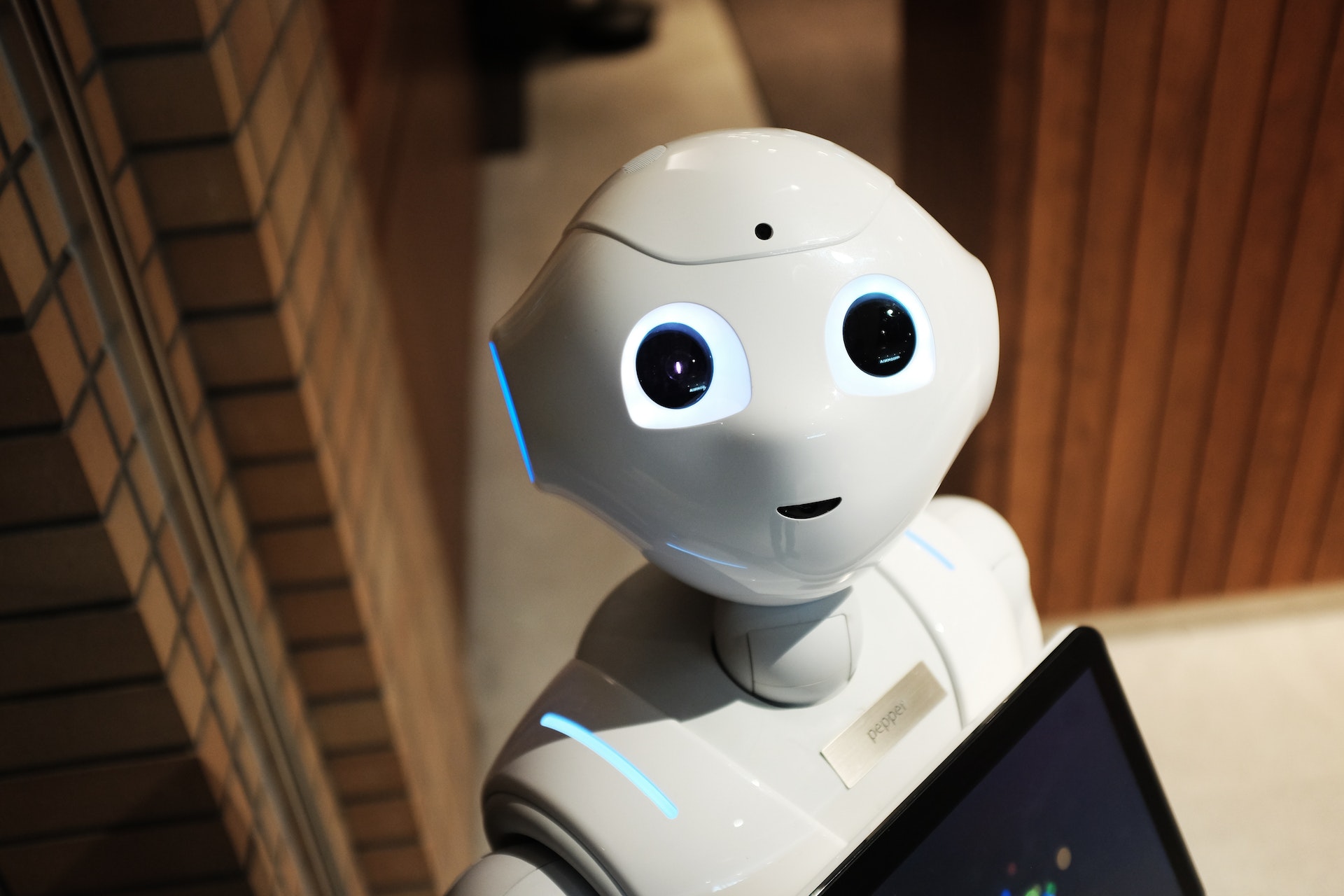Role Of Ai In Modern Architecture - Beyond Blueprints And Machines
Discover the role of AI in modern architecture design and its implications for sustainability, social equity, and economic efficiency. Learn how AI can help architects optimize designs for energy efficiency, reduce environmental impact, and create more inclusive spaces.
Author:Daniel BarrettOct 24, 2022329 Shares82.2K Views

In the past few years, artificial intelligence (AI) has changed many fields, including architecture.
AI has the potential to change the way architects design, from coming up with ideas to building things. Here are some of the most important facts about the role of AI in modern architecture.
The Role Of AI In Modern Architecture
AI is changing modern architecture design in many ways, such as by optimizing designs, doing predictive analysis, and running projects more efficiently.
Even though there are some problems and limits to think about, using AI in architecture has big economic effects, such as lowering costs, increasing competition and innovation, and creating new business models and opportunities.
As AI technology keeps getting better, it's likely that architects and design firms will use it more and more in their work to stay competitive and give their clients better results.

Artificial intelligence and architecture | Giorgio Verdiani | TEDxTirana
Design Optimization And Generative Design
AI algorithms can help architects make better designs by looking at things like the conditions of the site, building codes, and the environment.
AI can also come up with design options based on specific criteria given by architects, like how much natural light they want or how energy efficient they want the building to be.
This method is called "generative design," and it can help architects quickly and easily try out a wide range of design options.
Predictive Analysis And Performance Optimization
AI can also be used to predict how a building will perform once it is constructed. This can include factors such as energy usage, thermal comfort, and acoustic performance.
By simulating these conditions before construction, architects can optimize their designs to improve performance, reduce energy costs, and enhance occupant comfort.
Life Cycle Assessment
Life cycle assessments(LCAs) of building materials and goods can also be done with AI. LCAs look at how a product or material affects the environment over its whole lifecycle, from being mined to being thrown away. By using AI algorithms to do LCAs, architects can make better decisions about what materials to use and how to design a building.
Climate Change Mitigation
As the world continues to deal with the effects of climate change, AI can help in very important ways.
By making designs more energy efficient and reducing carbon emissions during building and use, architects can help reduce the damage buildings do to the environment and contribute to global efforts to stop climate change.
Sustainable Design And Construction
AI can help architects make designs that are better for the environment by looking at things like energy use, daylighting, and ventilation.
By using sustainable design principles from the start, architects can make buildings less harmful to the environment and less expensive to run over their lifetimes.
Construction And Project Management
AI can also help architects run their projects better by automating things like planning and allocating resources. AI algorithms can look at project data and make suggestions to improve safety, speed up construction, and cut down on waste.
Building Maintenance And Management
AI can be used to monitor and analyze data from building systems such as HVAC, lighting, and security. By analyzing this data, AI can identify areas for optimization and alert building managers to potential maintenance issues before they become problems.
Cost Reduction And Efficiency
AI can help architects save money and time by making designs and building processes more efficient. This can be especially helpful for big projects, where even small improvements in cost and efficiency can save a lot of money.
Increased Competition And Innovation
As AIis used more in architecture design, competition between architects and design firms is likely to get tougher. But this competition can also lead to more innovation as architects try to stand out from each other by using AI in new ways.
New Business Models And Opportunities
The use of AI in architecture design may also create new business models and opportunities. For example, some companies may focus on making AI algorithms for architects, while others may focus on putting AI into building management systems.
Challenges And Limitations
Even though AI has a lot of benefits in architecture design, there are also some problems and limits to think about.
For example, AI algorithmsneed a lot of data to work well, and some architects might be hesitant to use designs made by computers. Additionally, there are concerns around data privacy and security when it comes to using AI in building management.
Increased Accessibility And Inclusiveness
AI can help architects design buildings that are more accessible and inclusive. By analyzing data on factors such as population demographics and mobility needs,
AI algorithms can help architects optimize designs for accessibility and ensure that buildings are welcoming to people of all abilities.
Changing Roles And Responsibilities
The rise of AI in architecture design may lead to changing roles and responsibilities for architects.
AI can automate some tasks and make them more efficient, but architects will still be very important in the design process because of their creativity, expertise, and direction.
Learning To Use AI In Architecture Design
To take advantage of the benefits of AI in architecture design, architects will need to learn how to use AI tools and technologies effectively. This could mean learning new skills, like how to analyze data and write code, and working with AI experts and software developers.
Feminist Approaches To AI In Architecture
Feminist approaches to AI in architecture can help make sure that the benefits of AI are shared fairly and that the needs of different groups of people are taken into account.
Architects can make designs that are more inclusive, accessible, and meet the needs of all users by taking into account the experiences and points of view of women, people of color, and other marginalized groups.
Also, feminist approaches to AI can help fix problems with bias and discrimination in AI systems and algorithms.
The Future Of Human Architects
As AI keeps getting better, some people may wonder what will happen to human architects in the future.
AI can automate some tasks and make them more efficient, but architects will still be very important in the design process because of their creativity, expertise, and direction.
Also, the rise of AI in architecture design could give architects new chances to specialize in things like data analysis, programming, and integrating AI.
People Also Ask
What Is The Role Of Artificial Intelligence In Architecture?
Artificial Intelligence (AI) is increasingly being used in architecture to optimize designs for efficiency, sustainability, and user experience.
AI algorithms can analyze vast amounts of data, including environmental factors, user preferences, and building performance data, to help architects create designs that are more energy-efficient, sustainable, and responsive to the needs of users.
AI can also assist in automating certain tasks, such as building systems design, allowing architects to focus on more creative aspects of the design process.
Will AI Replace Architects?
While AI can automate some tasks and improve efficiency in architecture design, it is unlikely to replace architects altogether.
AI algorithms are currently not capable of providing the creativity, expertise, and guidance that human architects can offer. Instead, the rise of AI in architecture may create new opportunities for architects to specialize in areas such as data analysis, programming, and AI integration.
You can follow the daily articlesfrom CAM (commercial architecture magazine) to review their latest research and educational resources of AI for architects.
What Is The Main Importance Of Artificial Intelligence?
The main importance of Artificial Intelligence is its ability to analyze vast amounts of data quickly and accurately, identify patterns, and make predictions or decisions based on that analysis.
This has enormous potential across a wide range of industries, including healthcare, finance, transportation, and manufacturing.
In architecture, AI can help optimize designs for efficiency, sustainability, and user experience, and contribute to social goals such as increasing accessibility and inclusivity.
By automating certain tasks and providing data-driven insights, AI can help architects work more efficiently and effectively, while also improving the quality of their designs.
Conclusion
In conclusion, the role of AI in modern architecture is important and has a wide range of effects on how buildings are designed, built, and operated.
AI can help architects make designs that are more sustainable, use less energy, and have less of an impact on the environment. It can also help with social goals like making things more accessible and welcoming to everyone and promoting feminist ways of designing buildings.
At the same time, the rise of AI in architecture could give architects new chances to specialize in things like data analysis, programming, and integrating AI.
Even though AI has a lot of benefits in architecture design, it is important to remember that human architects will still be very important in the process. They will continue to provide creative ideas, expertise, and guidance.
As the field of AI in architecture continues to change, architects will need to keep up with the latest trends and developments in order to design buildings that are efficient, sustainable, and meet the needs of all users.
Jump to
The Role Of AI In Modern Architecture
Design Optimization And Generative Design
Predictive Analysis And Performance Optimization
Life Cycle Assessment
Climate Change Mitigation
Sustainable Design And Construction
Construction And Project Management
Building Maintenance And Management
Cost Reduction And Efficiency
Increased Competition And Innovation
New Business Models And Opportunities
Challenges And Limitations
Increased Accessibility And Inclusiveness
Changing Roles And Responsibilities
Learning To Use AI In Architecture Design
Feminist Approaches To AI In Architecture
The Future Of Human Architects
People Also Ask
Conclusion

Daniel Barrett
Author
Daniel Barrett is a tech writer focusing on IoT, gadgets, software, and cryptocurrencies. With a keen interest in emerging technologies, Daniel offers expert analysis and commentary on industry trends. Follow him for authoritative insights into the latest tech innovations.
Latest Articles
Popular Articles


